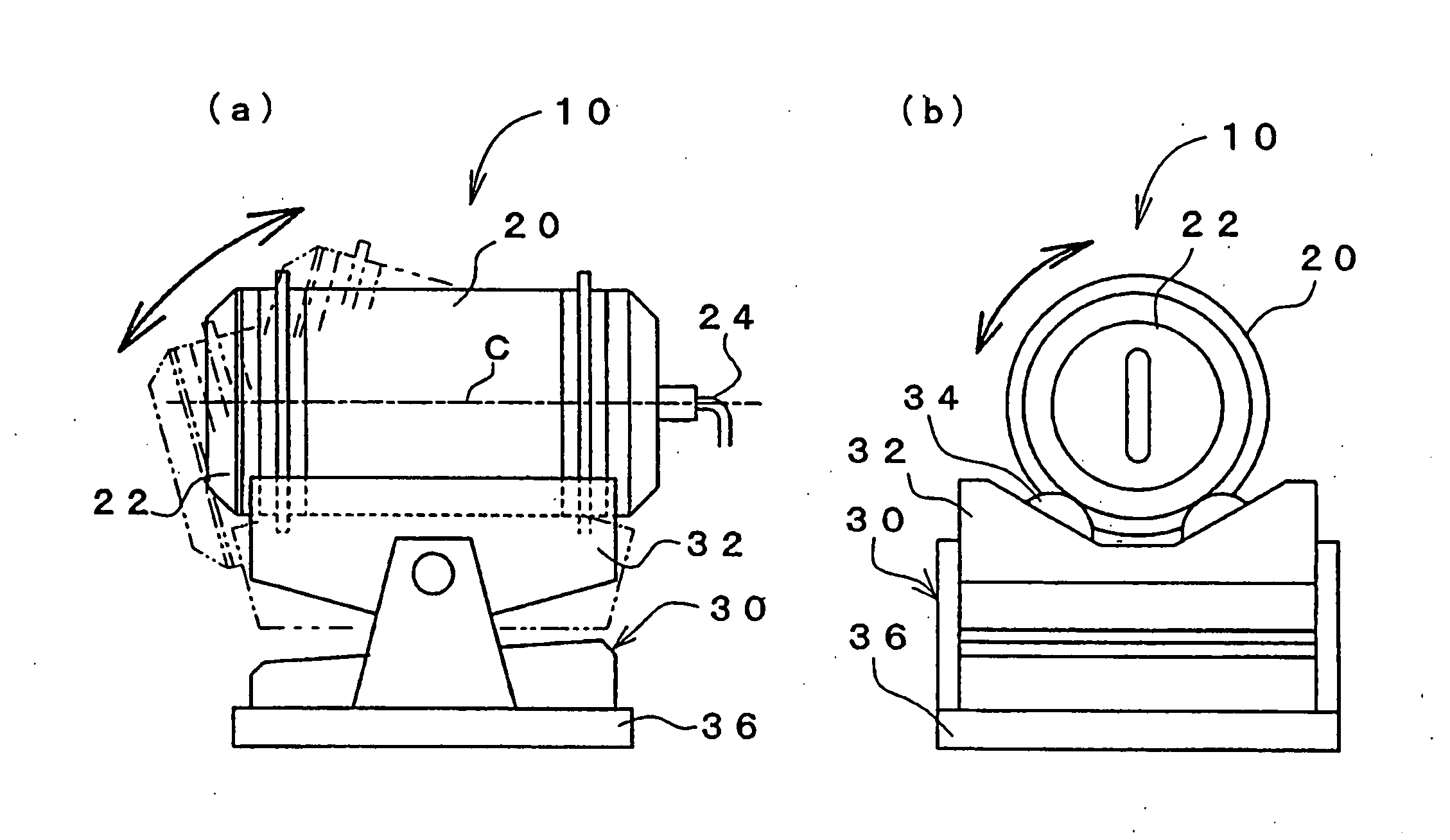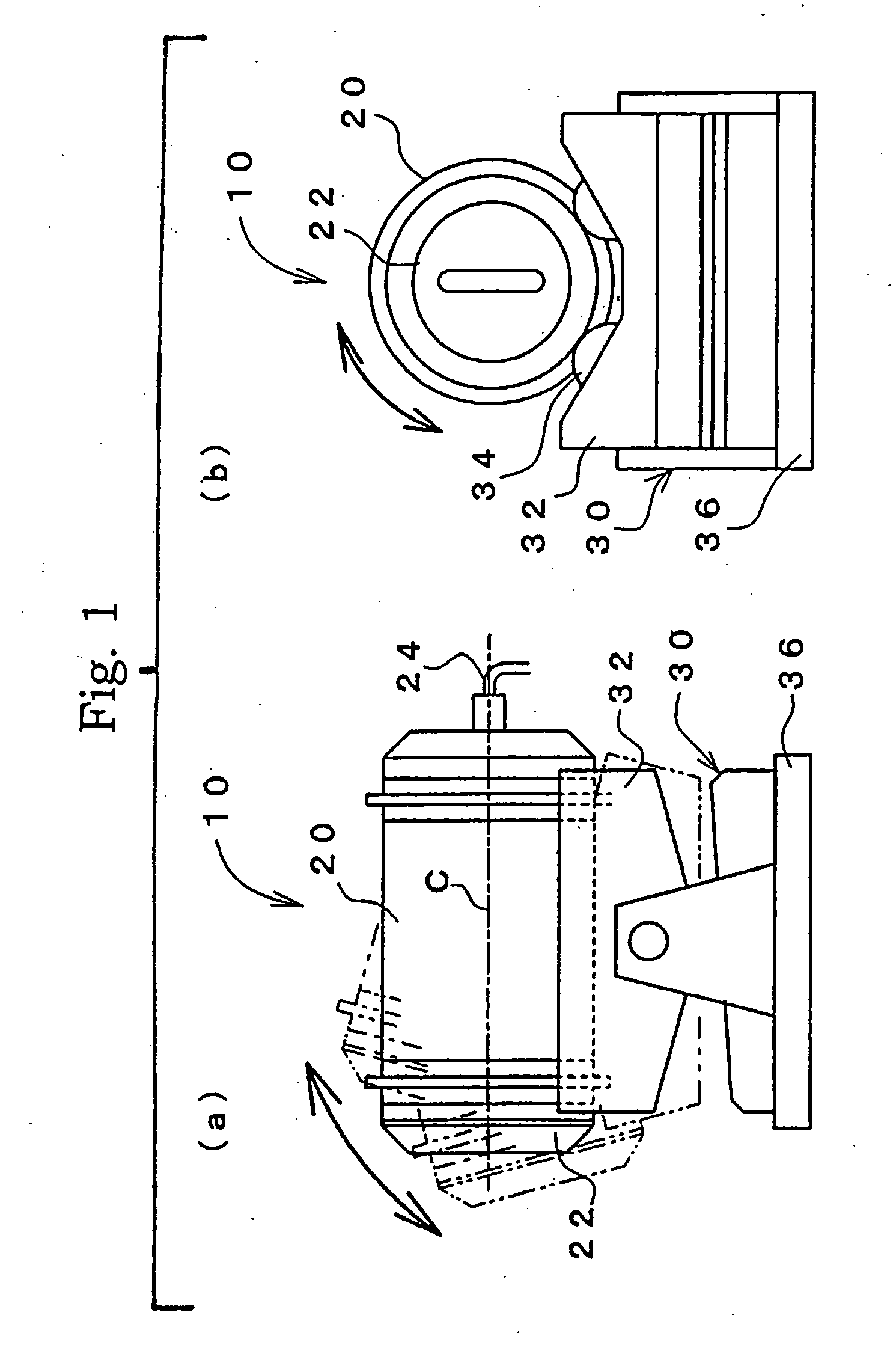Production process for catalyst
a production process and catalyst technology, applied in the direction of catalyst activation/preparation, physical/chemical process catalysts, metal/metal-oxide/metal-hydroxide catalysts, etc., can solve the problems of low support ratio, low physical strength of the supported catalyst, low production yield of the objective catalyst, etc., to achieve efficient and uniform production, reduce dispersion in the diameter of the catalyst, and increase yield and catalyst strength
- Summary
- Abstract
- Description
- Claims
- Application Information
AI Technical Summary
Benefits of technology
Problems solved by technology
Method used
Image
Examples
example 1
[0163]:
[0164] Spherical silica-alumina carrier having particle diameters of 4.5 to 5.0 mm.
[0165]:
[0166] While 20,000 parts of pure water was heat-stirred, 3,000 parts of ammonium molybdate, 663 parts of ammonium metavanadate, and 459 parts of ammonium paratungstate were dissolved therein. Separately, while 2,000 parts of pure water was heat-stirred, 855 parts of copper nitrate trihydrate was dissolved therein. The resultant two aqueous solutions were mixed together, thus obtaining a catalyst precursor in the form of a suspension.
[0167]:
[0168] Rocking Mixer (model: RM-30) produced by Aichi Denki Co., Ltd.
[0169] An external heating unit is equipped thereto. The treatment container is roughly the shape of a cylinder of 285 mm in diameter, 540 mm in length, and about 30 dm3 in capacity.
[0170] The treatment container is equipped in a horizontal state, and then revolved around the central axis and at the same time rocked in the upward and downward directions.
[0171]:
[0172] The tre...
example 2
[0178] A catalyst C was obtained in the same way as of Example 1 except that: the supporting treatment was carried out in a state where the inside of the treatment container was put under a reduced pressure of 100 hPa by connecting a vacuum pump to the exhaust piping which opened into the treatment container, It took 220 minutes to finish spraying the entirety of the predetermined amount of the suspension. Between the exhaust piping and the vacuum pump, there was set a trap for preventing such as water vapor (discharged from the treatment container) from flowing into the vacuum pump.
example 3
[0179]:
[0180] Spherical silica-alumina carrier having particle diameters of 4.5 to 5.0 mm.
[0181]:
[0182] A suspension as obtained by the same process as of the catalyst precursor of Example 1 was dried with a drum dryer and thereafter calcined at 400° C. under air atmosphere over a period of 6 hours. The resultant calcined product was pulverized so as to have particle diameters of not larger than 500 μm, thus obtaining a powdery catalyst precursor.
[0183]:
[0184] The treatment container of the same supporting treatment apparatus as of Example 1 was charged with 6 dm3 of the carrier.
[0185] While the treatment container was revolved at a revolution rate of 15 rpm, the treatment container was rocked at 5 spm in a rocking angle of 40°. While the revolution and the rocking were continued, pure water to be a binder was sprayed into the treatment container from the spray nozzle. After the treatment had been carried out for 10 minutes, the revolution and rocking of the treatment containe...
PUM
| Property | Measurement | Unit |
|---|---|---|
| Percent by mass | aaaaa | aaaaa |
| Percent by mass | aaaaa | aaaaa |
| Percent by mass | aaaaa | aaaaa |
Abstract
Description
Claims
Application Information
 Login to View More
Login to View More - R&D
- Intellectual Property
- Life Sciences
- Materials
- Tech Scout
- Unparalleled Data Quality
- Higher Quality Content
- 60% Fewer Hallucinations
Browse by: Latest US Patents, China's latest patents, Technical Efficacy Thesaurus, Application Domain, Technology Topic, Popular Technical Reports.
© 2025 PatSnap. All rights reserved.Legal|Privacy policy|Modern Slavery Act Transparency Statement|Sitemap|About US| Contact US: help@patsnap.com


